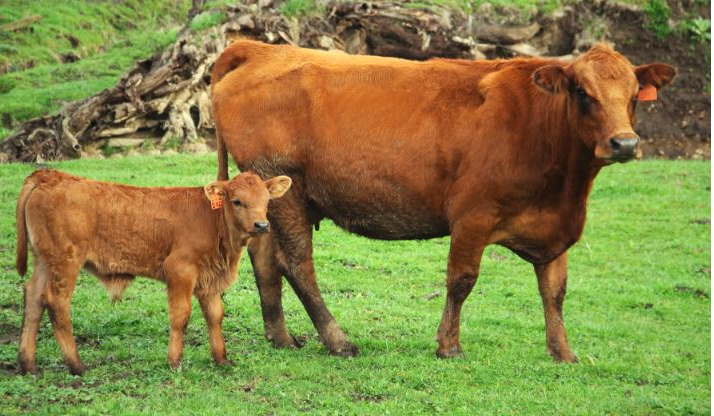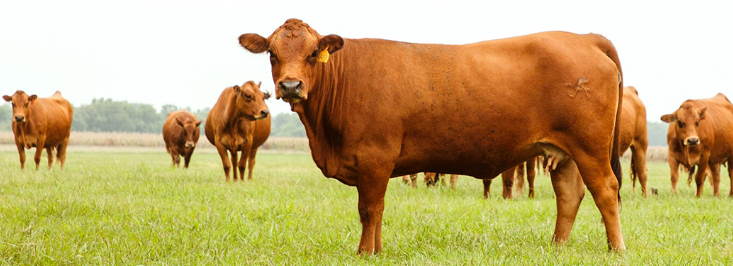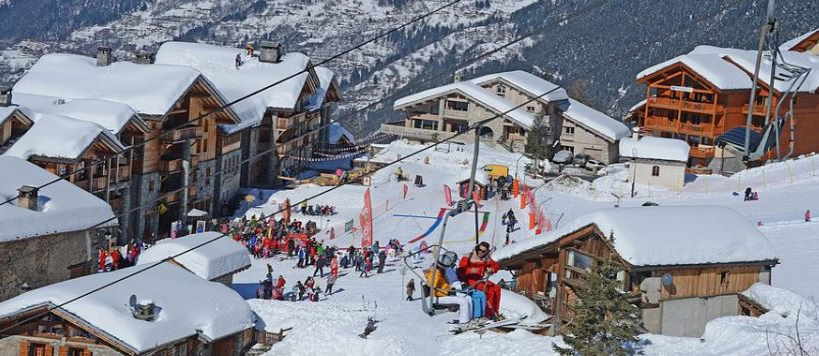Have you heard of the Tarentaise cattle breed? No?
Allow us to interest you with a walk down memory lane.
 Long ago, back in the days when men traveled on foot and covered their skins with animal hides, herders watched their flocks in the northern French Alps (modern-day Tarentaise). You can probably guess where this story goes from here. The Alps sit around where three borders come together- France, Italy, and Switzerland. The herders went about their activities down in the valley, not knowing that a great miracle was underway.
Long ago, back in the days when men traveled on foot and covered their skins with animal hides, herders watched their flocks in the northern French Alps (modern-day Tarentaise). You can probably guess where this story goes from here. The Alps sit around where three borders come together- France, Italy, and Switzerland. The herders went about their activities down in the valley, not knowing that a great miracle was underway.
While it is not quite clear what happened, researchers can agree that the Tarentaise breed resulted from a crossbreed. The two main culprits were none other than Bos taurus Alpinus and Bos taurus Jurassicus. It gets even more interesting. These two breeds were also a result of other cattle lines. So, the Tarentaise breed's breeding was an outcome of centuries of improvements, which finally led to what we have today. How interesting is that!
The story continues evolving. The Tarentaise breed that existed at first is quite different from what we have today. Do you believe in evolution? Homo erectus and all? Well, this story takes on a similar approach. The first of these cattle settled in the valley's mountainous region, where the conditions were not quite as favorable to other breeds. You know how it goes. You either shape up or ship out. So, the cattle adapted to the alps, learning how to graze in areas other cattle could only dream of and making the most out of these conditions.
As they made their way up and down the alps (pretty much like hitting the gym hard), their muscle developed and grew strong. But that was not all. Their cardiovascular systems also grew stronger to help keep up with the strain on their bodies. As a result, these cattle developed much faster than other breeds.

Comparing a female from this breed with others, differences were easily apparent. For one, the Tarentaise would mature fast, which would show in the pelvic region, playing a significant role in their ease of calving. The benefits were not only to the cows but also the calves, which had to mature fast to keep up with the conditions. The calves would nurse fast, become hardy in a short period and move up the ladder just as fast. It was quite impressive.
The physical features of the cows were also quite interesting. Unlike other breeds where the udders would bulge and grow bigger with each calf, the Tarentaise cows would maintain small and tight udders. (If only they could sell their secret to gyms across the world. But the trick is clear- spend months on end climbing the alps!) It got even more interesting. Their bodies developed a dark pigmentation that not only kept the sun’s harmful effects at bay but also protected their most sensitive areas, such as the udder. Their hooves were also hard and dark and would remain sturdy even when the conditions were less than appealing.
Was there icing on the cake? Sure! The cows also had high fertility, enabling them to calve frequently. It also helped that exposure to the extremities had enabled them to develop high resistance to diseases.
With all these interesting features, it was not long before cattle breeders in the Savoie region decided to take a closer look at the breed. And what a shock they got, realizing that this breed had much of what they desired. And so it was in the 1800s that the breeders introduced the cattle to their herds. The introduction was so successful that they did the same in North Africa, where the French had their colonies. Moving from the mountainous region to the Sahara desert would have been impossible for most cattle, but the Tarentaise did quite well and adapted to the new conditions.
Soon, herders from across the globe were trying to get their hands on this breed to improve on what they already had. Presently, this breed serves two purposes- milk and meat, in most regions, but in France, people rely on it to make Beaufort, a type of cheese.
Characteristics

The male cows have masculine features coupled with wide foreheads and long, muscular necks. They weigh anything from 1600 to 2100 pounds on average.
On the other hand, the females are feminine, with weights of 900-1300 pounds on average.
Upsides
Breeding these cattle has proven to be less tasking compared to other breeds. For one, they mature early and can adapt to a wide range of conditions, making it easy for them to survive almost anywhere. In addition to being hardy, they also live long, increasing their return on investment for people looking to make commercial gains. They also calf easily and have impressive fertility.
Their milk production is high even without increasing their feed and has rich quality. No wonder the French cannot get enough of cheese derived from this milk.
Head on down to the valley and get to see the Tarentaise cattle in their native environments!



